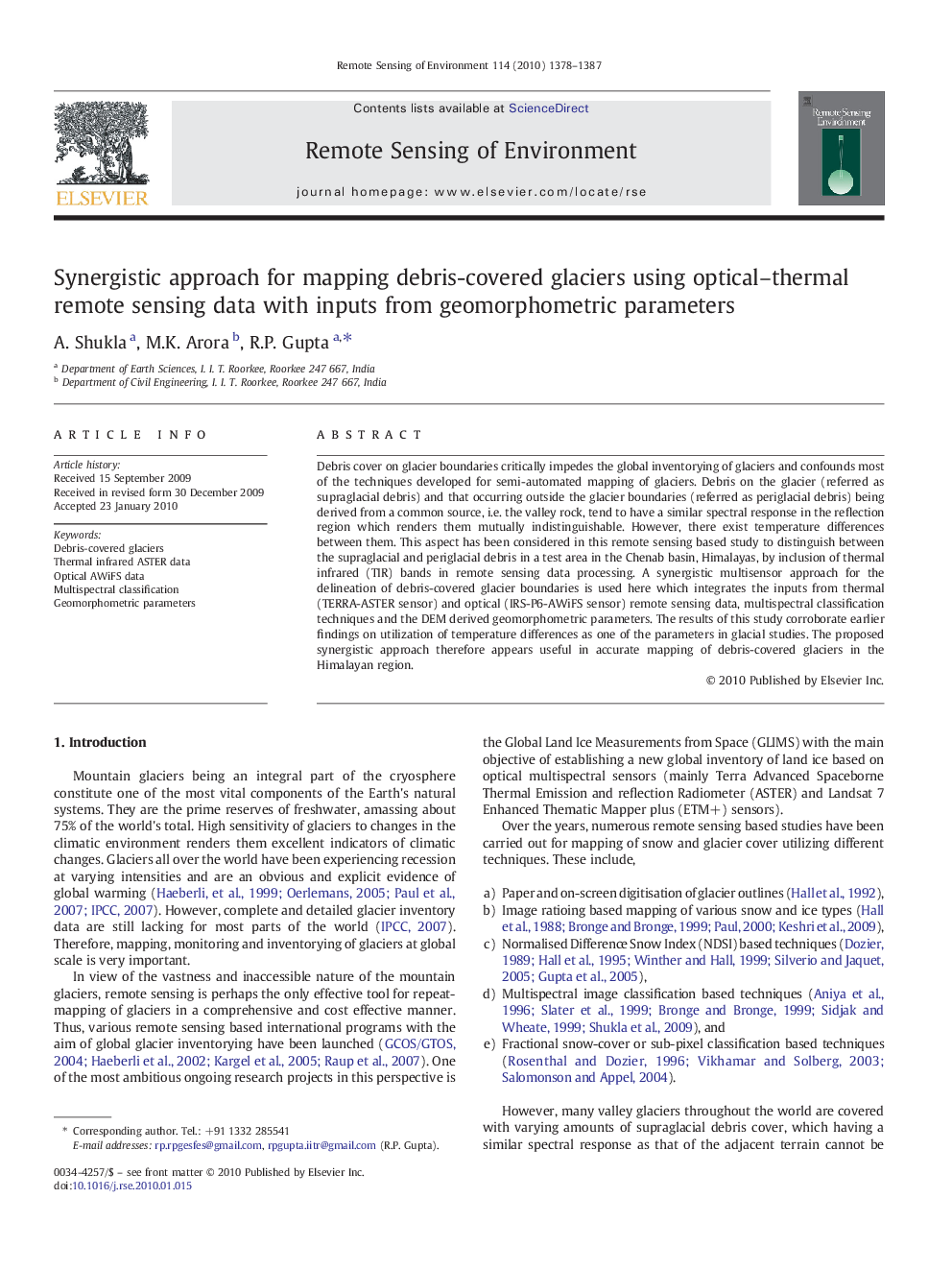| Article ID | Journal | Published Year | Pages | File Type |
|---|---|---|---|---|
| 4459726 | Remote Sensing of Environment | 2010 | 10 Pages |
Debris cover on glacier boundaries critically impedes the global inventorying of glaciers and confounds most of the techniques developed for semi-automated mapping of glaciers. Debris on the glacier (referred as supraglacial debris) and that occurring outside the glacier boundaries (referred as periglacial debris) being derived from a common source, i.e. the valley rock, tend to have a similar spectral response in the reflection region which renders them mutually indistinguishable. However, there exist temperature differences between them. This aspect has been considered in this remote sensing based study to distinguish between the supraglacial and periglacial debris in a test area in the Chenab basin, Himalayas, by inclusion of thermal infrared (TIR) bands in remote sensing data processing. A synergistic multisensor approach for the delineation of debris-covered glacier boundaries is used here which integrates the inputs from thermal (TERRA-ASTER sensor) and optical (IRS-P6-AWiFS sensor) remote sensing data, multispectral classification techniques and the DEM derived geomorphometric parameters. The results of this study corroborate earlier findings on utilization of temperature differences as one of the parameters in glacial studies. The proposed synergistic approach therefore appears useful in accurate mapping of debris-covered glaciers in the Himalayan region.
